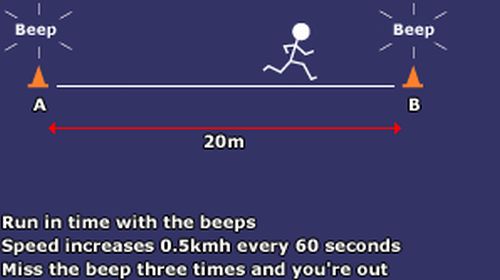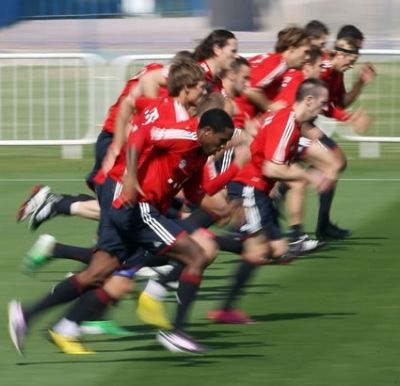
Beep Test Summary
The beep test is a test of fitness, and is used as a measure of your aerobic capacity. It is not something that you would normally train for, as you would usually be doing the training for your specific sport and using the test to determine if you have reached your training goals.
However, the test is also commonly used as an important selection criteria for some sporting teams or jobs. Therefore many people need to train specifically for the test in order to reach a desired score.
Ideally, the test should be a true representation of your aerobic fitness. However, due to the nature of the test, there may be inaccuracies and you may not be reaching the level you have the potential to. I see that there are three main areas that can be addressed to maximize your beep test score: mental toughness, pacing strategies and physical conditioning. Depending on what level you are at, one or more of these can be used to help you achieve your potential in this test.
If you follow all of the following suggestions, you should at least reach your potential in the test, based on your current fitness level.
Do Physical Training
The beep test is a measure of your aerobic fitness. If you really want to significantly improve your score in the test, you need to do some aerobic type training. You cannot avoid it, you will have to do some hard work. There’s elsewhere more details about training for the beep test.
If you don’t want to work hard, and/or you don’t have the time to make significant changes to your fitness, here are some other methods to help maximize your beep test score.
Prepare Well
You should be physically ready to perform the test. You should have recovered with at least 24 hours since the last heavy training session,and be free from injury or illness. Make sure you hydrate well beforehand, and have a light meal 1-2 hours before the test. You should also feel comfortable, by wearing loose clothing and by having firm fitting footwear with a good grip. You should also perform a light warm-up before the test.
Be Mentally Tough
The beep test can be a mentally tough test for some, and some good improvements can often be made, without any change in your base fitness, by a more positive state of mind. Pushing through the pain barrier may help you reach a higher level.
Use Sound Technique
Using an efficient turning technique you will minimize any excess energy wasted during the turning phase. As you come in to the turn, time it so that only one foot just touches over the line, and turn sharply, not following a wide arc which will mean more distance traveled. You should drop your hips slightly as you turn, and push off strongly for the first few strides to get up to pace. When you get near the end of a level, try to be on time with the beep, and step up your pace straight away. Run efficiently to conserve energy – run with your shoulders relaxed and breath deeply and smoothly.
Use Pacing Strategies
Also without any change in aerobic fitness, you may be able to improve your score by pacing yourself so that energy is not wasted from end to end. Try and stay relaxed, quickly getting up to the required pace. Running at a consistent pace will be more efficient.

